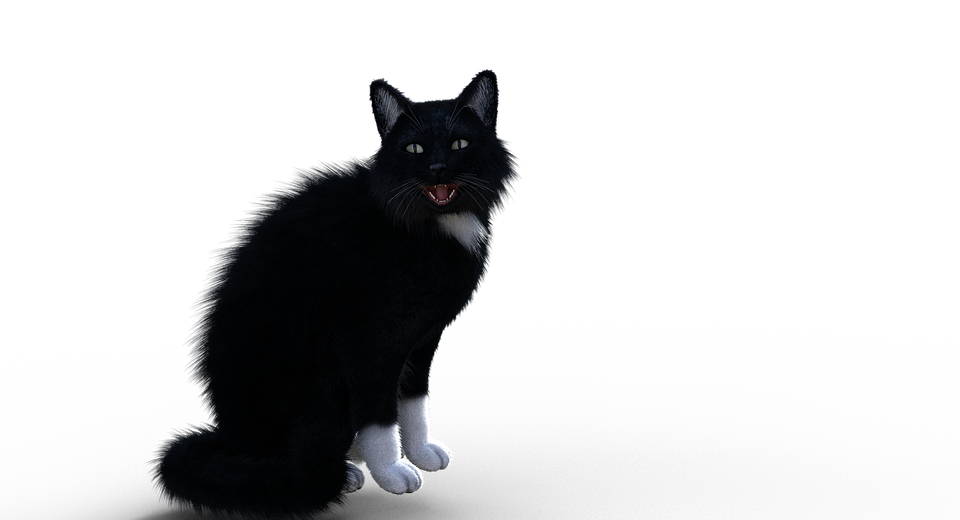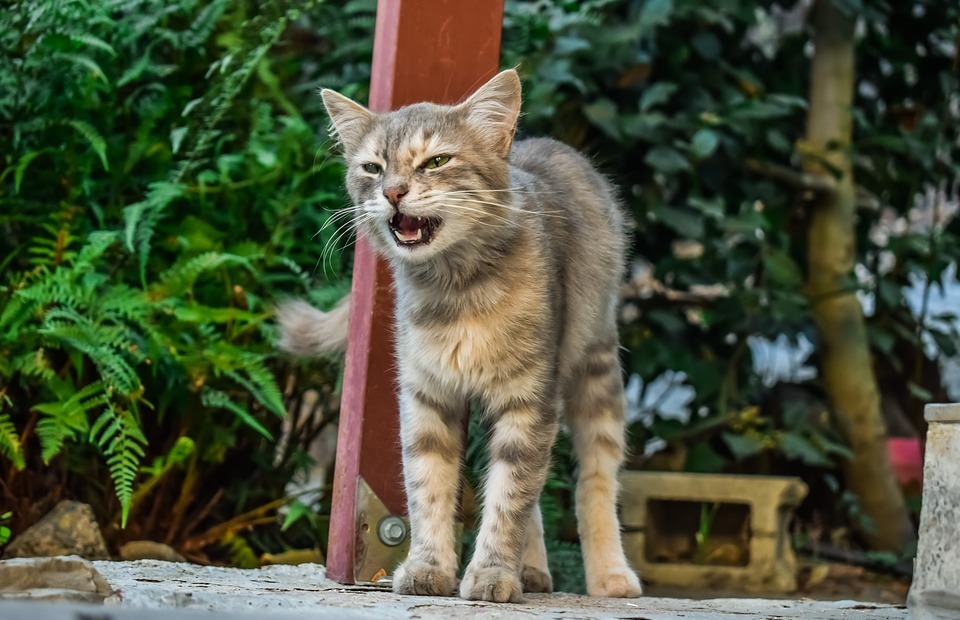Ever watched your cat snooze and wondered what's going on behind those closed eyes? Those twitching whiskers, the rapid eye movements – they paint vivid scenes of a hidden world, sparking the question: do cats dream? This journey delves into the fascinating world of feline sleep, unraveling the science behind their slumber and exploring the possibility of dreams in these enigmatic creatures.
Part 1: The Nature of Feline Sleep

1.1 Sleep Patterns: A Closer Look at Cat Slumber
Cats, like us, journey through different sleep stages, each with unique physiological characteristics.
1.1.1 Non-REM Sleep: Rest and Recuperation
Non-REM sleep, the stage of deep relaxation, is comprised of three phases:
- Stage 1 (Drowsiness): This light stage marks the transition from wakefulness to sleep, characterized by slow, rolling eye movements and relaxed muscles. Think of it as the "zoning out" phase before falling asleep.
- Stage 2 (Light Sleep): In this deeper stage, brain waves become slower and more regular, and muscle activity decreases further. Breathing becomes more regular, and the cat might twitch occasionally.
- Stage 3 (Deep Sleep): This is the most restful stage, featuring slow brain waves, reduced muscle activity, and minimal eye movements. The cat is deeply asleep and difficult to wake.
1.1.2 REM Sleep: The Realm of Active Brain Activity
Rapid Eye Movement (REM) sleep is the most intriguing stage, characterized by:
- Rapid eye movements: The eyes dart back and forth under closed eyelids, suggesting active brain activity, almost like they're watching a movie in their mind.
- Increased brain activity: The brain shows similar activity patterns to when the cat is awake. This points to intense mental activity and processing during this stage.
- Muscle paralysis: The muscles are essentially "paralyzed," preventing the cat from acting out its dreams, a safety mechanism to keep them from hurting themselves.
1.2 The Sleep-Wake Cycle: A Polyphasic Approach
Cats are polyphasic sleepers, meaning they sleep in multiple short bursts throughout the day. This contrasts with humans who are monophasic sleepers, with one long sleep period at night.
1.2.1 Diurnal vs. Nocturnal: The Cat's Adaptable Schedule
While often perceived as nocturnal creatures, cats are naturally crepuscular, meaning they're most active at dawn and dusk. However, domestic cats have adapted to their human companions' schedules, leading them to exhibit more nocturnal behavior.
1.2.2 Age and Lifestyle: Influences on Sleep Patterns
Kittens, with their growing bodies and developing brains, sleep for extended periods, up to 18 hours a day. Adult cats typically sleep for 12-15 hours, with older cats often sleeping even longer. Their lifestyle – whether they're indoor or outdoor cats, how much they play, and their stress levels – all influence their sleep patterns.
Part 2: Unveiling the Evidence: Do Cats Dream?

2.1 Neural Connections: Shared Brain Structures
Despite the evolutionary distance between cats and humans, their brain structures share remarkable similarities. Both species exhibit REM sleep, with its characteristic rapid eye movements and increased brain activity. This suggests that the neurological mechanisms underlying dreaming might be present in both cats and humans.
2.2 Behavioural Clues: Observing Sleep
Observational studies have provided intriguing insights into the potential for feline dreams.
2.2.1 Muscle Twitching and Vocalizations: Echoes of Activity
During REM sleep, cats often twitch their paws, whiskers, and ears, as if engaging in activities from their waking lives. They might even purr, meow, or hiss, suggesting they are experiencing emotions or engaging in interactions within their dream world. These behaviours can be fascinating to observe.
2.2.2 Post-Sleep Behaviour: Spilling Over into Reality
Some cats exhibit noticeable behaviour changes after waking from REM sleep, appearing startled, playful, or even aggressive. This could be a manifestation of their dream experiences spilling over into reality. Imagine a cat suddenly pouncing after a nap, perhaps reliving a dream hunt.
2.3 Scientific Investigations: Exploring the Unconscious
While research on cat dreams is limited, ongoing studies are shedding light on the brain activity associated with different sleep stages.
2.3.1 Brain Wave Patterns: A Window into the Mind
Brain wave patterns during REM sleep are similar to those observed during wakefulness, suggesting heightened neural activity. This supports the idea that cats, like humans, may be experiencing complex mental states during this phase of sleep.
2.3.2 Future Research: Unlocking the Secrets of Feline Sleep
Advances in technology are paving the way for more comprehensive studies on cat dreams. Brain imaging techniques, such as fMRI, can provide detailed insights into the neuronal processes underlying feline sleep and dreaming. These studies are expected to provide a deeper understanding of what happens in a cat's mind during sleep.
Part 3: Deciphering the Dream: Interpreting Feline Slumber
3.1 The Subjective Nature of Dreams: A Mystery Unravelled
Unlike humans who can recount their dreams upon waking, cats cannot articulate their dream experiences. This makes interpreting their dreams a challenging, if not impossible, task. We can only observe and infer from their behaviour.
3.2 Common Dream Themes: Clues from Behaviour
While we cannot directly access a cat's dream world, their behaviour during and after REM sleep offers hints about potential dream themes.
3.2.1 Hunting and Play: Reliving Instincts
Cats often exhibit hunting behaviours, such as stalking, pouncing, and chasing, during REM sleep. This suggests their dreams may involve the satisfaction of primal instincts, perhaps reliving successful hunts or chasing elusive prey.
3.2.2 Social Interactions: Navigating Relationships
Cats might dream about their owners, other pets, or even prey animals, reflecting their social interactions and relationships. Their dreams may involve bonding with their human companions, playful interactions with other cats, or even encounters with feathered or furry friends.
3.2.3 Emotions and Stress: Processing the Day's Events
Sleep, including dreaming, plays a crucial role in emotional regulation and stress reduction. It is possible that cats dream about experiences that have caused them stress or anxiety, allowing them to process these emotions during sleep.
Part 4: The Importance of Sleep for Cats: Beyond Rest
4.1 Physical Restoration: Recharging the Body
Sleep is essential for physical restoration and growth. During sleep, cats' bodies repair tissues, regulate hormones, and strengthen their immune systems. Sleep allows their bodies to recover from the day's activities and prepare for the next.
4.2 Mental Well-being: A Time for Processing
Sleep is not just about physical rest; it also plays a vital role in mental well-being. Dreaming allows cats to process information, regulate emotions, and consolidate memories. It's a time for their brains to process experiences and make sense of the world around them.
4.3 Health and Longevity: The Power of Sleep
Sufficient sleep is crucial for overall health and longevity in cats. Sleep deprivation can lead to various health problems, including weakened immune function, increased stress, and behavioural issues. Just like humans, a good night's sleep is essential for a cat's well-being.
Part 5: Creating Optimal Sleep Conditions: Cat Sleep Havens
5.1 A Quiet and Comfortable Environment: A Sleep Sanctuary
Cats need a quiet and comfortable space to sleep undisturbed. A soft bed, a quiet room, and minimal distractions can enhance their sleep quality. This could be a cozy cat bed, a sunny window sill, or even a comfy armchair.
5.2 Regular Routine: Promoting Healthy Sleep Habits
Establishing a consistent sleep-wake cycle can help regulate your cat's sleep patterns. Feeding times, playtime, and bedtime routines can all contribute to a more regular sleep schedule. A predictable routine can signal to your cat that it's time to wind down and prepare for sleep.
5.3 Enrichment Activities: Balancing Sleep and Activity
Ensuring your cat has ample opportunities for physical and mental stimulation throughout the day can promote better sleep at night. Provide interactive toys, scratching posts, and climbing structures to engage their natural instincts. A tired cat is a happy cat, and a happy cat sleeps better.
Part 6: FAQs
6.1 Do cats dream about chasing laser pointers?
While we can't be certain, the behaviour of cats during REM sleep, including chasing and pouncing movements, suggests that they may dream about their favourite activities, including playing with laser pointers. It's fun to imagine them chasing those elusive red dots in their dreams!
6.2 Can cats have nightmares?
While it's difficult to confirm, the observation of agitated behaviour after waking from REM sleep suggests that cats might experience negative emotions in their dreams, similar to nightmares. Just like us, they may dream about stressful situations or scary experiences.
6.3 How long do cats dream?
The duration of REM sleep varies depending on the cat's age and individual sleep cycle. However, a significant portion of their sleep time is devoted to REM sleep, indicating the importance of this stage. It seems like a considerable portion of their slumber is filled with active dreams.
6.4 Why do cats sleep so much?
Cats are naturally polyphasic sleepers, with their sleep cycles adapted to their crepuscular nature. They also have a high metabolic rate, requiring more rest to conserve energy. Their sleep needs are rooted in their biology and lifestyle.
6.5 Can I wake my cat from REM sleep?
It is not recommended to wake a cat during REM sleep, as it can be disruptive to their sleep cycle and potentially cause stress. Allow them to complete their sleep cycle naturally. Just like we wouldn't want to be rudely awakened from a vivid dream, cats deserve the same respect.
6.6 How can I help my cat get a good night's sleep?
Provide a quiet and comfortable sleep environment, establish a regular sleep-wake cycle, and ensure your cat has ample opportunities for physical and mental stimulation throughout the day. These simple measures can contribute to a more restful and enjoyable sleep experience for your feline friend.
Everyone is watching

Are Cat Ribs Flexible? Understanding Their Anatomy
CATS & KITTENSThis article delves into the fascinating world of feline anatomy, exploring the flexibility of cat ribs and ho...

Can Cats Eat Bananas? (Everything You Need to Know)
CATS & KITTENSThis article dives into the intriguing question of whether cats can safely enjoy the sweet, yellow fruit, bana...

Cat Lifespan: How Long Do Cats Live?
CATS & KITTENSThis comprehensive guide explores the factors influencing the lifespan of our feline companions, providing ins...

Can Cats Get COVID-19? What You Need to Know
CATS & KITTENSThis article will delve into the fascinating world of feline COVID-19 susceptibility. We'll explore whether ca...

Can Cats Eat Eggs? A Complete Guide to Egg Safety for Your Feline Friend
CATS & KITTENSWhen it comes to treating our furry companions, we all want to ensure we're doing what's best for them. Eggs...
